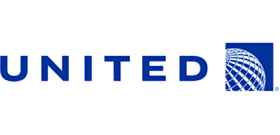 United Airlines sees a supersonic future
United Airlines sees a supersonic future
United Airlines aims to bring back supersonic travel before the decade is over with a plane that is currently just an artist’s drawing – even the prototype hasn’t flown yet.
The airline said on Thursday that it plans to buy 15 jets from Boom
Supersonic with an option for 35 more once the start-up company designs a
plane that flies faster than the speed of sound while meeting safety
and environmental standards. United hopes to carry passengers on the plane in 2029. The airline
said the plane would reduce flights between London and the New York area
to just three and a half hours and make Tokyo only six hours from San
Francisco.
United declined to discuss financial terms, but Boom chief executive Blake Scholl said the deal was worth $3 billion, or $200 million per plane with none of the discounting that is typical in the aircraft business.
It has been about two decades since the last flight of the supersonic Concorde, which British Airways and Air France began using in 1976 to zip passengers in luxury across the Atlantic.
The last one was retired in 2003, three years after an Air France Concorde crashed into a hotel shortly after take-off from Paris, killing everyone on board and four people on the ground.
Several companies are working to come up with new supersonic jets that would be more economical with fuel – and create fewer climate-changing emissions – than the Concorde.
Boom is working to develop an 88-seat plane it calls Overture, which it says will be the first supersonic airliner to fly on so-called sustainable fuel.
Mr Scholl said that a one-third sized prototype will make its first test flight later this year or early in 2022.
The Denver company said the plane will be capable of speeds up to 1.7 times the speed of sound, or about 2,090 kilometres per hour. That is slower than the Concorde but more than twice as fast as many current airliners. The endorsement from United is a major lift for Boom. Another supersonic contender, Aerion, said last month that it was running short of money to bring its plane, the AS2, into production.
Supersonic jets are often banned over populated areas because of the sonic booms they create. That eliminates many potential overland routes because the planes would have to fly at less efficient subsonic speeds.
Chicago-based United believes that its coastal hubs in San Francisco and Newark, New Jersey, and its corporate-traveller clientele make it better suited than its rivals to offer supersonic service. Mike Leskinen, United’s vice president of corporate development and a former aerospace analyst, said United hopes to offer both premium and economy seating but that no final decisions have been made on cabin layout.
United is sensitive about the high fares that helped doom the Concorde and is trusting that the cost to operate the Boom plane will come down over time as it has for other jets. The Concorde was the pride of British and French aircraft companies and it ushered in a new era of rapid travel over long distances. The plane had a distinctive delta-wing design that made it easily recognisable as it streaked overhead on its way to New York or Dulles Airport outside Washington.
Despite its cachet, the plane never caught on widely. The sonic booms limited its routes over land, and its high costs and relatively small size compared with other jets made tickets too expensive for anyone other than the wealthy or well-connected.
